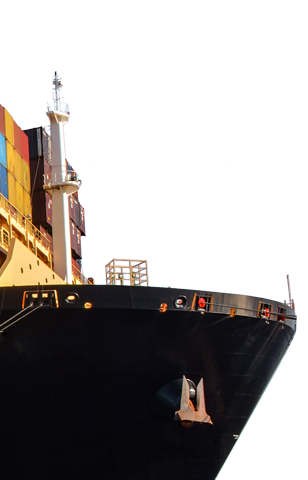X marks the spot for Central Florida shipments
- Home
- >
- Cargo Blog
- >
- X marks the spot for Central Florida shipments
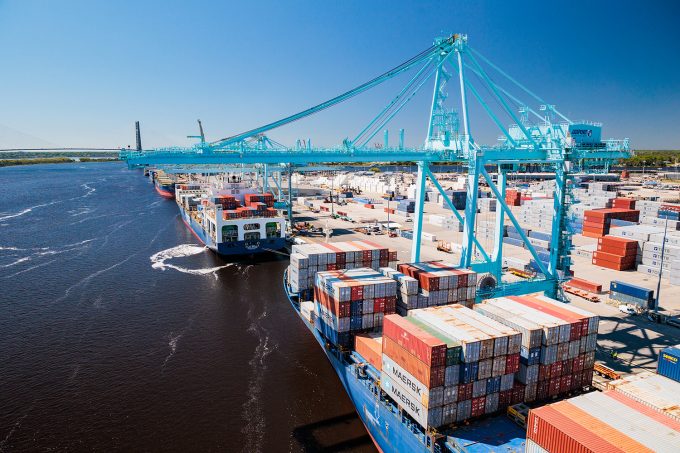

Written by Kieyera Kolbow, JAXPORT Marketing Intern
Edited by JAXPORT staff
Ever wonder why Central Florida businesses consistently route their international freight through Jacksonville instead of other East Coast ports? The answer might surprise you – and lower costs for your business.
JAXPORT is not just Northeast Florida’s shipping hub – it is the State of Florida’s No. 1 container port and a strategic gateway to global markets for Central Florida.
The Geographic Advantage You Can’t Ignore
Location ranks amongst the top factors that supply chain managers consider when selecting a port. JAXPORT checks that box with its strategic location. The port is located within a one-day truck drive of 98 million consumers, representing nearly a third of the U.S. population. This includes the entire State of Florida, the nation’s third most populous state.
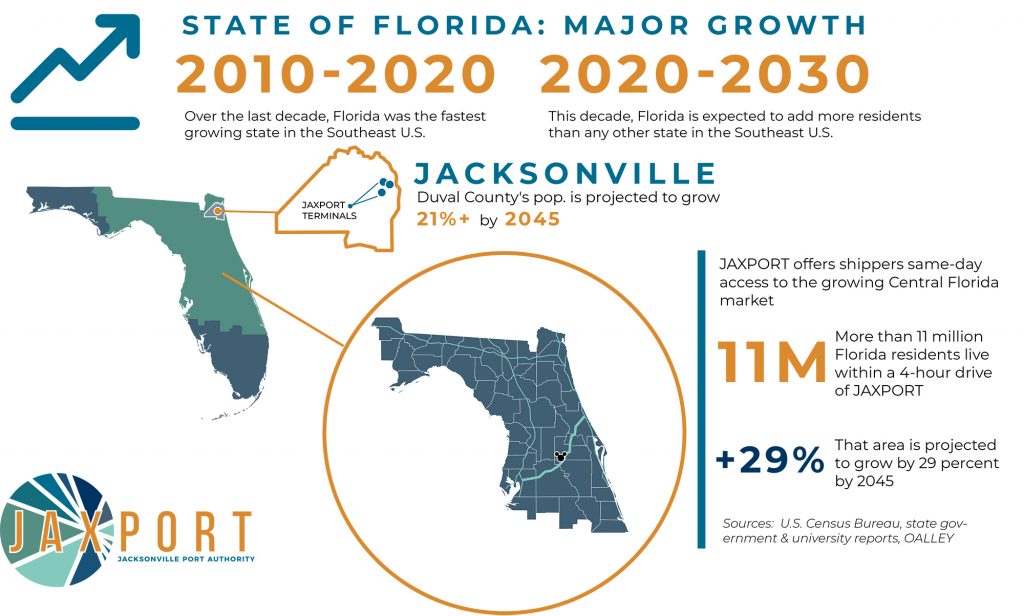
For Central Florida businesses, this proximity translates to tangible benefits. Shipments reach Orlando and the surrounding area faster than routing through out-of-state ports. As an example, by using JAXPORT, shippers save 90 minutes or more on a one-way dray from port to door in Central Florida, versus out-of-state ports, which translates to hundreds of dollars in savings for each move.
JAXPORT’s position at the crossroads of Interstates 95, 10 and 75 creates a logistics link directly with your warehouse, import or production facility. This same-day connectivity is a competitive edge for meeting ever-shrinking delivery windows.
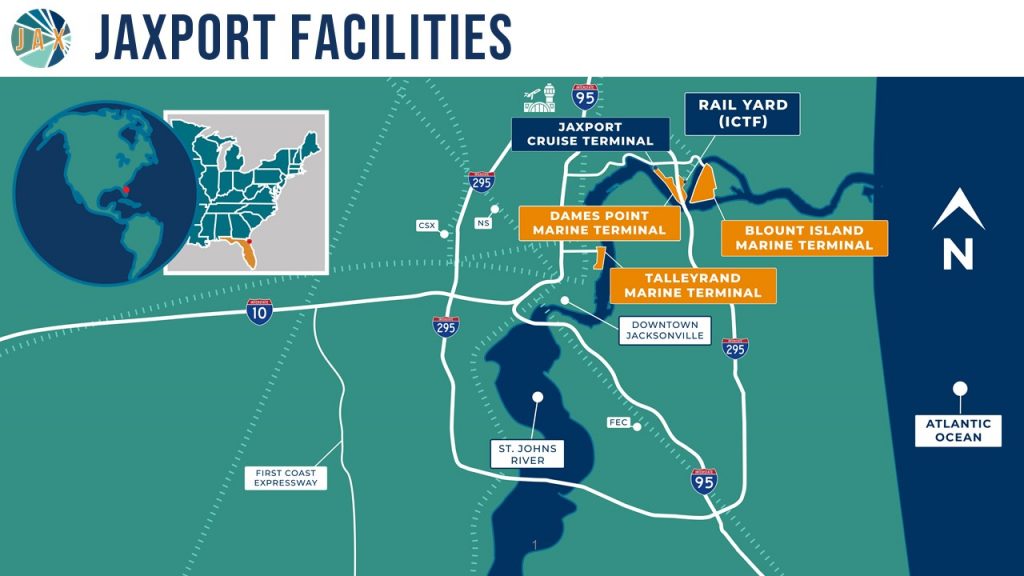
The Numbers That Make CFOs Take Notice
Independent studies have consistently confirmed JAXPORT offers savings based upon the total landed cost for Central Florida-bound cargo from Asia. While amounts have varied over the last five years, as of March 2025, shippers could save 15% or more on the total landed cost of a 40′ container shipped from Yantian, China to Orlando, Florida, when routing through JAXPORT versus out-of-state ports.
This helps businesses plan their supply chains optimally. For example, Northeast Florida-based Beaver Street Fisheries switched to JAXPORT several years ago and have enjoyed lower drayage costs and accelerated container turnover, creating multiples of efficiency throughout their operation.
Shippers don’t just save on hard costs. They can also reduce their carbon footprint, as shippers save 158 kg in CO2e operational emissions while enjoying shorter distances compared to routing through the nearest out-of-state port, a compelling environmental advantage aligned with modern sustainability goals.

Beyond the Berth: JAXPORT’s Multimodal Muscle
Modern supply chains require seamless connections between sea, rail and road. JAXPORT delivers on all fronts.
The port’s integration with Class I railroads, regional rail, near-dock and on-dock facilities enables 40 daily trains to connect shippers with markets up and down the Florida coast, and beyond the state to Midwest markets.
JAXPORT’s Intermodal Container Transfer Facility at Dames Point reduces drayage distances from 19 miles to under 3 miles between ship berths and the rail yard. Less trucking means lower costs and reduced emissions – sustainability and savings working together to benefit your business.
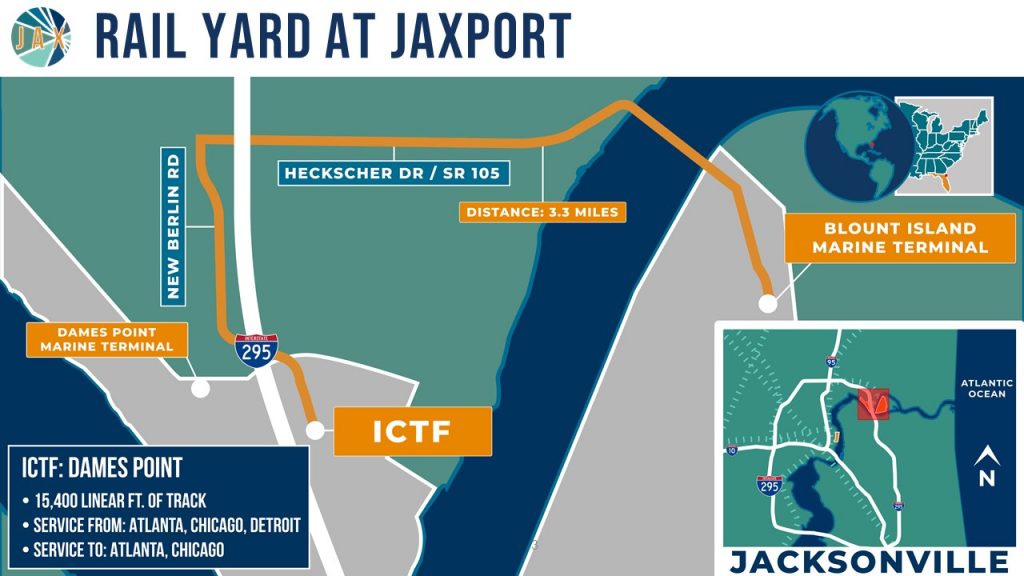
A complement to the rail services at the port is the variety of trucking services available. More than 150 trucking firms operate in the Jacksonville area.
With a river channel wide enough for ships to pass each other, as well as efficient labor and connectivity options, time-sensitive shipments benefit Florida’s agriculture, automotive and aerospace sectors where efficiency is mission-critical.
“We’re able to reach virtually 100 percent of our customers in Florida overnight from Jacksonville, which was a real selling point for us,” said Pasha Gavrichev, Chief Operating Officer at ecommerce retailer 1A Auto.
Global Connections Opening New Markets
JAXPORT offers major shipping alliances and unique container services, providing direct connections with ports around the world. Your products can reach virtually any market worldwide through JAXPORT’s terminals.
Looking to expand globally? JAXPORT has your business covered between the port’s Asia, Oceania and Latin America services, offering robust access to high-growth regions. The port also offers services between the U.S. and Europe as well as Africa.
“We are excited to see the updates this year to the global ocean carrier alliances,” said JAXPORT Chief Commercial Officer Robert Peek. “Our carrier partners have been supportive, offering shippers global access to markets through JAXPORT.”
The Port of Jacksonville also remains the No. 1 port on the mainland for Puerto Rico trade, handling 90% of volume. Weekly services via JAXPORT give Central Florida importers and exporters access to the prominent Caribbean market.
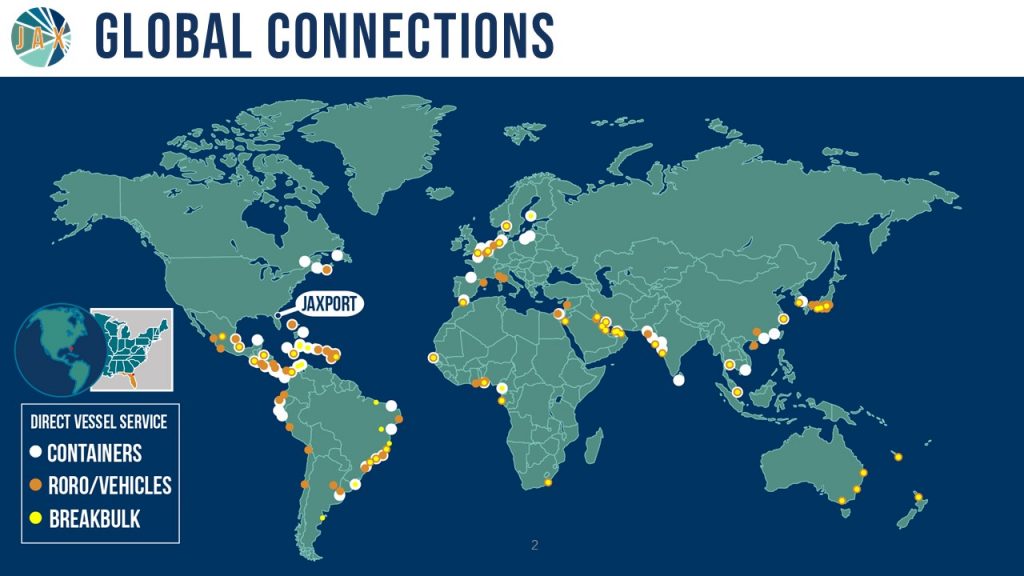
When Reliability Becomes Your Competitive Edge
Remember the global supply chain disruption during the pandemic? While vessels queued for weeks at other ports, JAXPORT maintained efficient harbor operations with no anchorage delays.
The port’s 47-foot-deep shipping channel accommodates post-Panamax vessels with a capacity exceeding 14,000 TEUs. The absence of anchorage delays and advantage of two-way river traffic translates to predictable supply chain timelines.
Smart Money: Financial Advantages Beyond Transportation
Foreign Trade Zone No. 64 – the largest by area in Florida – spans 5,000 acres in 10 counties and offers significant benefits for importers. Duty deferment, exemption from inverted tariffs and streamlined customs processes create immediate financial advantages.
Businesses can improve their cash flow by eliminating duties on re-exported goods through FTZ No. 64. The zone’s millions of square feet of warehousing provides flexible storage or staging options for Central Florida distributors, further reducing operational costs.
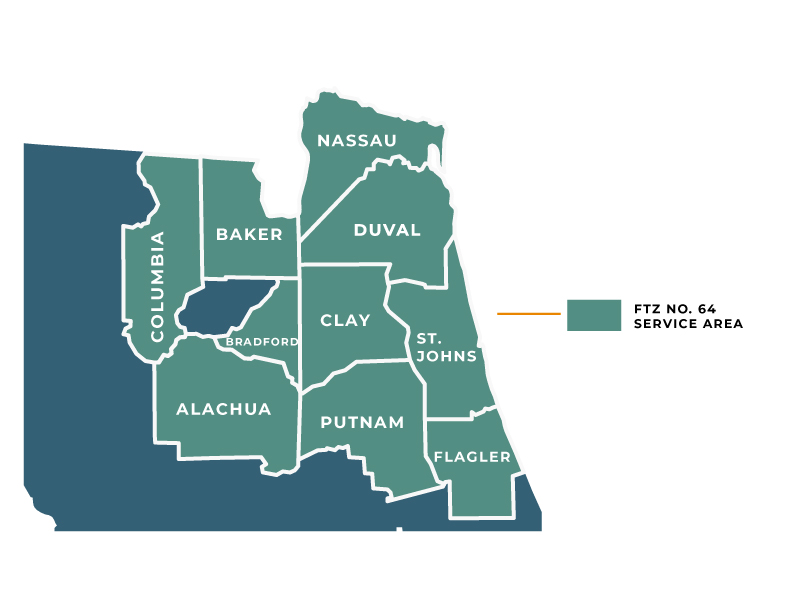
Building Tomorrow’s Port Today
JAXPORT is reimagining what a port can be for Florida businesses.
By the end of 2026, raising of the St. Johns River utility lines spanning Jacksonville’s shipping channel to an operational height of 205 feet will be complete, enabling unrestricted access for ultra-large container vessels. Furthermore, the upgrade to Blount Island’s auto terminals will add to the port’s vehicle processing capacity.

JAXPORT CEO
Eric Green
“Public and private investments in our terminals ensure JAXPORT continues to generate business growth benefitting our region and state,” said JAXPORT CEO Eric Green.
Your Next Move: Partner with JAXPORT
The logistics advantages for Central Florida businesses are clear: faster transit times, lower costs, reduced carbon emissions and superior connectivity that satisfy both regulators and consumers.
But numbers tell only part of the story. JAXPORT’s cargo sales team works directly with shippers to optimize routing, leveraging partnerships to identify backhaul opportunities and intermodal savings.
Ready to optimize your Central Florida supply chain?
Schedule your consultation or call (800) 874-8050 to speak with a JAXPORT logistics specialist who understands Central Florida’s unique supply chain challenges.
